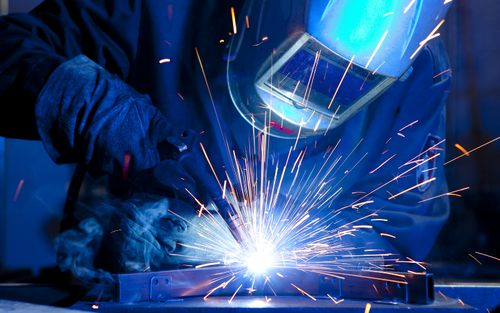Welder’s Anthrax: A Newly Identified Deadly Disease
Researchers at the Centers for Disease Control and Prevention’s (CDC) National Institute for Occupational Safety and Health (NIOSH) have discovered a new deadly occupational hazard in the United States known as “welder’s anthrax”. It is a special case of pneumonia that can be found in metal workers. Symptoms include fever or chills, cough, shortness of breath (dyspnea), and coughing up blood (hemoptysis).
Welder’s anthrax is caused by bacteria within the B. cereus group, the same one that produces the anthrax toxin, which is how it got its name. Seven cases have been reported between 1994 – 2020, according to public health officials. Six workers were welders, and the other was a metalworker. The infections took place in the Gulf states, including Texas and Louisiana. Details of the infections and the types of welding that occurred are limited for several patients; however, one worker welded on a mild carbon steel via metal arc welding while the other was working in a wood fabrication shop. All seven patients had abnormal chest radiographs and were diagnosed with pneumonia.
Welders and metalworkers face an increased risk of pneumonia and death from breathing in mineral dust. Experts say breathing in these particles may even increase the chance of lung infection, even among relatively harmless bacteria and infectious agents. It’s still not entirely clear how metal debris causes disease, but professional welders and metalworkers are urged to take precautions.
Employers and worksite managers are encouraged to educate workers on welding safety protection, including the dangers of welder’s anthrax.
Workers are also encouraged to limit their potential exposure to these hazards using the hierarchy of controls. The hierarchy begins by physically removing the potential hazard from the space. This may not be an option when it comes to welding and metalwork. Next on the list is substitution. Workers can reduce their risk on the job by substituting one type of task for another. Individuals at risk of welder’s anthrax may consider using another approach to complete the task at hand by cutting through metals.
Workers and managers can also implement engineering controls to isolate people from the hazard. This is designed to put distance between the worker and the activity. Companies can install walls and protective barriers to block the spread of particles. The team can also clean and vacuum the worksite regularly to remove as much debris from the air as possible. It’s not safe to use compressed air and brushes, as this will just spread the debris around. Increasing ventilation and moving the worksite closer to open windows and doors can also prevent infection.
Finally, workers can wear personal protective equipment (PPE), such as welding helmets and welding respirator masks, that cover the nose and mouth to block the spread and inhalation of contaminants while welding and working with metal.
Every welder and metalworker should be aware of welder’s anthrax and the dangers it poses to a person’s health. While information is limited, workers can protect themselves on the job to reduce their chances of exposure. At PK Safety, we’re experts at finding the safety supply gear for any job and teaching our customers to use it properly. Contact us today to speak to one of our safety experts.
Recent Posts
-
Customizing Gas Detectors: Tailoring Solutions to Fit Your Unique Requirements
In today’s diverse industrial landscape, a one-size-fits-all approach to safety simply doesn’t cu …Jul 3rd 2024 -
10 Ways to Prevent Wildfires
You can prevent wildfires by extinguishing flames before you leave the worksite. Avoid practicing …Jul 1st 2024 -
ANSI/ISEA 138 Safety Gloves: Ensuring Hand Protection
The human hand is an anatomical masterpiece and arguably the greatest tool attached to our bodies …Jun 25th 2024





